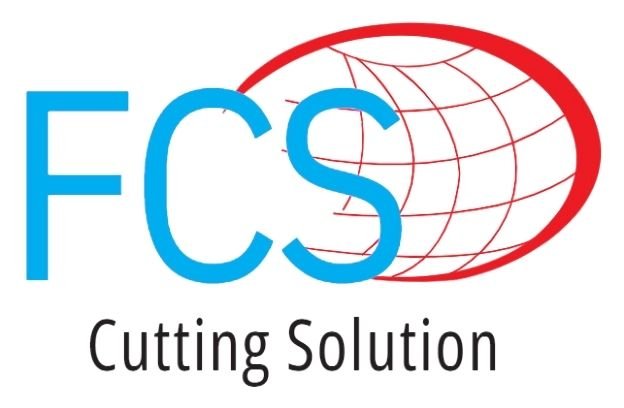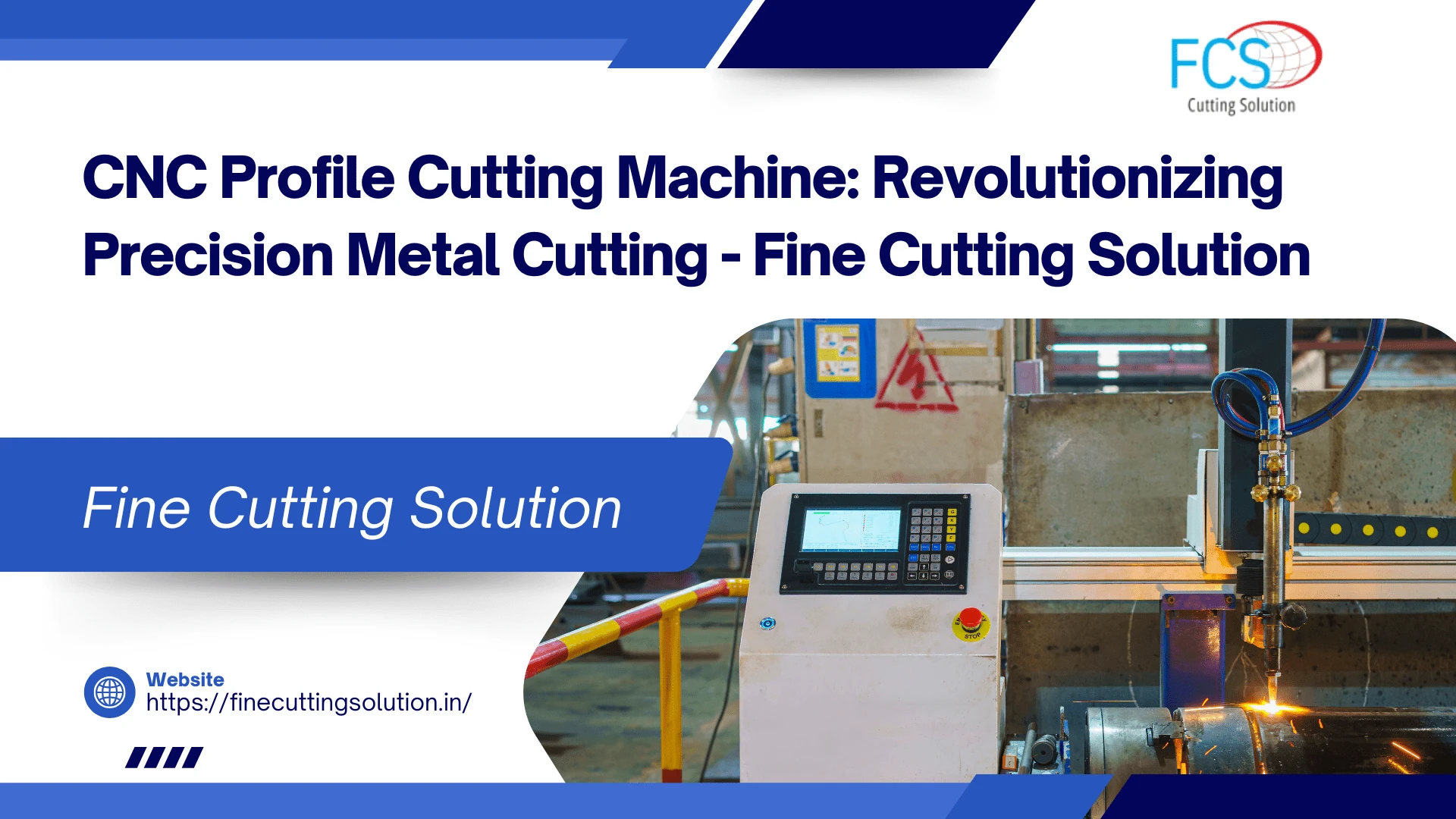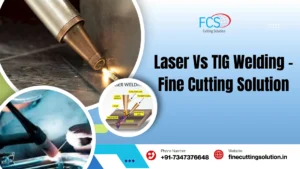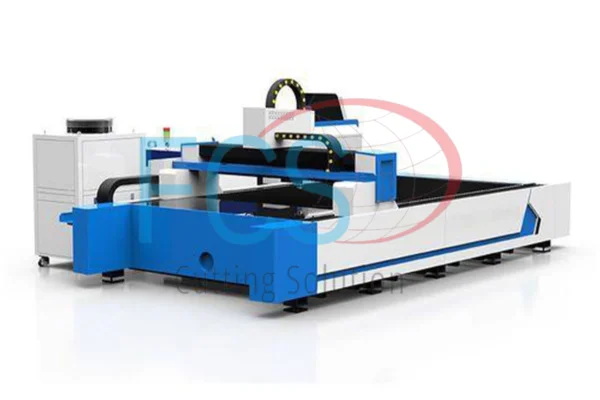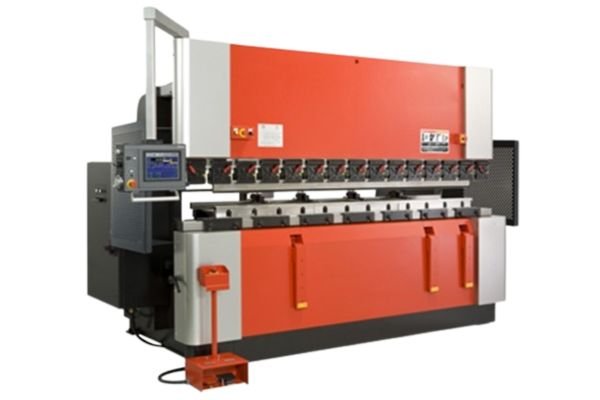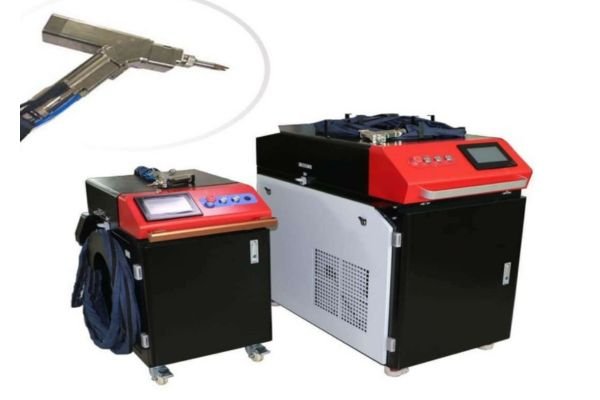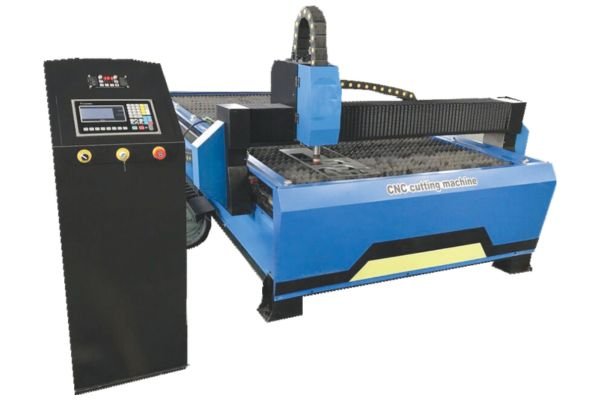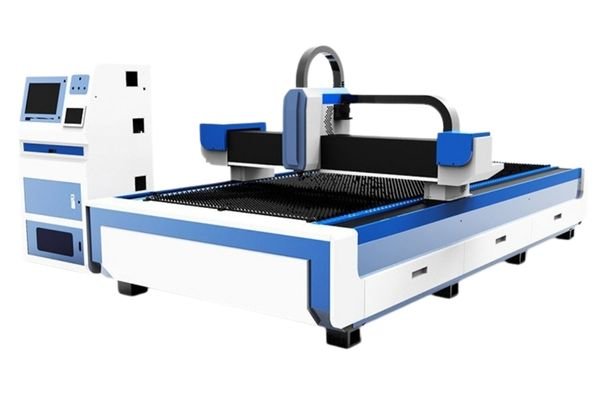CNC Profile Cutting Machine: Revolutionizing Precision Metal Cutting – Fine Cutting Solution
Metal cutting has changed a lot in recent years. New technology has made it easier and better. CNC profile cutting machines are leading this change. These machines help cut metal pieces with great accuracy. They work fast and make clean cuts every time.
What Are CNC Profile Cutting Machine
CNC stands for Computer Numerical Control. These machines use computer programs to cut metal. The computer tells the machine exactly where to cut. This makes the cutting very accurate. The machine follows the computer instructions perfectly.
Profile cutting means cutting shapes from metal sheets. The machine can cut straight lines and curved lines. It can make circles and squares. It can also cut complex shapes that would be hard to make by hand.
These machines work with different types of metal. They can cut steel and aluminum. They also work with copper and brass. The thickness of the metal can vary too. Some machines cut thin sheets while others handle thick plates.
How CNC Cutting Machine Work
The process starts with a design on the computer. Engineers create drawings of what they want to cut. These drawings show exact sizes and shapes. The computer program converts these drawings into cutting instructions.
The metal sheet goes on the cutting table. Clamps hold it in place so it does not move during cutting. The cutting head moves above the metal following the computer path. Different cutting methods can be used depending on the job.
Plasma cutting uses hot gas to melt through metal. Laser cutting uses a focused light beam. Waterjet cutting uses high pressure water with tiny particles. Each method has its own benefits for different types of work.
The machine moves very smoothly and accurately. It can make sharp corners and smooth curves. The speed can be adjusted based on the metal type and thickness. This ensures the best quality cut every time.
Types of CNC Profile Cutting Machine
Plasma Cutting Machines
Plasma cutters are very popular for metal cutting. They work by sending electricity through gas to create plasma. This plasma gets very hot and melts the metal. The melted metal blows away leaving a clean cut.
These machines work well with steel and stainless steel. They can cut thick metal plates quickly. The cutting speed is faster than other methods for thick materials. They are also less expensive than laser machines.
Plasma cutting works best on electrically conductive metals. The cut quality is good for most industrial uses. The heat affected zone is small compared to flame cutting. This means less warping of the metal piece.
Laser Cutting Machines
Laser cutting machines use focused light beams to cut metal. The laser beam is very concentrated and precise. It can make very fine cuts with smooth edges. The cutting accuracy is excellent.
These machines work well with thin to medium thickness metals. They can cut very detailed shapes and patterns. The cut edges are usually smooth and may not need additional finishing. This saves time and money in production.
Laser cutting produces very little waste material. The cutting path is narrow so more parts fit on each metal sheet. This makes production more efficient and cost effective.
Waterjet Cutting Machines
Waterjet cutting uses high pressure water mixed with abrasive particles. The water pressure can be over 60000 pounds per square inch. This incredible pressure cuts through metal cleanly.
These machines can cut very thick materials. They work with almost any type of metal or material. The cutting process does not create heat so there is no heat distortion. This is important for maintaining accurate dimensions.
Waterjet cutting produces excellent edge quality. The cuts are smooth and square. Very little finishing work is needed after cutting. This makes it ideal for precision parts.
Oxy Fuel Cutting Machines
Oxy fuel cutting uses oxygen and fuel gas to cut metal. The flame heats the metal to ignition temperature. Then pure oxygen blows through to create the cut. This method works well for thick steel plates.
These machines are less expensive than other types. They can cut very thick materials that other methods cannot handle. The equipment is simpler and easier to maintain. Operating costs are generally lower.
The cutting speed is slower than plasma or laser for thin materials. But for thick plates it can be more economical. The heat affected zone is larger which may cause some distortion.
Benefits of CNC Profile Cutting
High Precision and Accuracy
CNC machines cut with incredible precision. They can hold tolerances of a few thousandths of an inch. This level of accuracy is impossible to achieve by hand cutting. The computer control eliminates human error in cutting.
Repeatability is another major advantage. The machine cuts identical parts every time. Whether making one part or one thousand parts they will all be exactly the same. This consistency is crucial for modern manufacturing.
The cutting path is optimized by the computer software. This ensures the most efficient cutting sequence. It reduces material waste and cutting time. The result is better productivity and lower costs.
Increased Speed and Efficiency
Automated cutting is much faster than manual methods. The machine works continuously without breaks. It can operate for hours without stopping. This dramatically increases production capacity.
Setup time is also reduced with CNC machines. Once the program is created it can be used repeatedly. No time is wasted marking and measuring each piece. The operator just loads material and starts the machine.
Multiple parts can often be cut at the same time. The software can arrange parts efficiently on the metal sheet. This nesting capability maximizes material usage. More parts are produced from each sheet of metal.
Consistent Quality
Every cut made by a CNC machine meets the same quality standard. There is no variation between different operators or shifts. The computer control ensures consistent results regardless of who runs the machine.
Edge quality is predictable and repeatable. The cutting parameters are set once and maintained automatically. This eliminates the trial and error often associated with manual cutting methods.
Quality control is easier with CNC cutting. Parts can be measured against the original design automatically. Any problems are detected quickly before many parts are made incorrectly.
Reduced Labor Costs
CNC machines require fewer operators than traditional cutting methods. One person can often run multiple machines. This reduces labor costs significantly. The operator skill requirements are also different focusing more on programming than hand cutting skills.
Training time for operators is typically shorter. The machine does most of the skilled work automatically. Operators mainly load material and monitor the cutting process. This makes it easier to find and train qualified workers.
Safety is improved with automated cutting. Operators are farther from the cutting process. This reduces the risk of injury from sparks heat or moving parts. Better safety means lower insurance costs and fewer workplace accidents.
Material Savings
CNC cutting reduces material waste significantly. The computer software optimizes part placement on each sheet. Parts are arranged to use the maximum amount of material possible. This nesting capability can reduce waste by 20 percent or more.
Cutting accuracy also reduces waste. Parts are cut to exact size the first time. There is no need to cut oversized and then machine to final size. This eliminates the waste from secondary operations.
Better inventory management is possible with CNC cutting. Parts can be cut just in time rather than keeping large inventories. This reduces material handling and storage costs.
Applications Across Industries
Construction and Architecture
The construction industry uses CNC cut metal parts extensively. Structural steel beams are cut to exact lengths. Connection plates are cut with precise hole patterns. This ensures proper fit during assembly.
Architectural metalwork benefits greatly from CNC cutting. Decorative panels can be cut with intricate patterns. Building facades use custom cut metal pieces. The precision allows complex designs that would be impossible otherwise.
Rebar cutting and bending is another construction application. CNC machines cut reinforcement bars to exact lengths. They can also create precise bends for specific applications. This improves concrete reinforcement quality.
Automotive Industry
Car manufacturers use CNC cutting for many components. Body panels are cut from steel or aluminum sheets. The precision ensures proper fit between parts. This is critical for vehicle safety and appearance.
Exhaust systems use CNC cut components. Pipes are cut to exact lengths and angles. Flanges and brackets are cut with precise hole patterns. This ensures proper assembly and performance.
Custom automotive parts often require CNC cutting. Race car components need precise dimensions for optimal performance. Restoration parts for classic cars can be reproduced accurately using CNC technology.
Shipbuilding Industry
Ships require thousands of precisely cut metal parts. Hull plates must fit together perfectly to maintain structural integrity. CNC cutting ensures each plate is cut to exact specifications.
Pipe systems on ships are complex and require precise cutting. Pipes must fit through tight spaces and connect at specific angles. CNC cutting makes it possible to cut these complex shapes accurately.
Deck equipment and fittings use CNC cut components. Anchor chains railings and equipment mounts all benefit from precise cutting. The marine environment requires parts that fit properly to prevent water intrusion.
Aerospace Applications
Aircraft parts require the highest levels of precision. Even small errors can affect flight safety. CNC cutting provides the accuracy needed for aerospace components. Every part must meet strict quality standards.
Weight reduction is critical in aerospace applications. CNC cutting allows engineers to remove material precisely where it is not needed. This creates lighter parts without sacrificing strength. The weight savings improve fuel efficiency.
Complex shapes are common in aerospace design. Wing components and engine parts have intricate geometries. CNC cutting makes it possible to produce these shapes accurately and consistently.
Manufacturing and Fabrication
General manufacturing uses CNC cutting for many applications. Machine parts are cut from various metals. The precision ensures proper fit and function. This improves machine reliability and performance.
Sheet metal fabrication relies heavily on CNC cutting. Brackets enclosures and panels are cut to exact specifications. The smooth cut edges often eliminate the need for additional machining operations.
Prototype development is faster with CNC cutting. New designs can be cut and tested quickly. Changes can be made easily by modifying the computer program. This accelerates the product development process.
Choosing the Right CNC Cutting Machine
Consider Your Material Requirements
Different cutting methods work better with different materials. Plasma cutting works well with steel and stainless steel. Laser cutting is excellent for thin materials and non metals. Waterjet cutting handles thick materials and hard metals.
Material thickness is an important factor. Thin materials may require laser or fine plasma cutting. Medium thickness materials work well with most cutting methods. Very thick materials may require waterjet or oxy fuel cutting.
The type of metal affects the choice of cutting method. Aluminum cuts well with laser or plasma. Steel works with all cutting methods. Exotic alloys may require waterjet cutting for best results.
Evaluate Production Volume Needs
High volume production benefits from faster cutting methods. Plasma and laser cutting offer good speed for most applications. The cutting speed should match your production requirements to avoid bottlenecks.
Setup time becomes important for high volume runs. Methods with quick setup and changeover are preferred. CNC systems with automatic tool changing save time between jobs.
Consider future growth when selecting equipment. A machine that meets current needs but cannot grow with the business may need to be replaced sooner. This increases the total cost of ownership.
Budget Considerations
Initial equipment cost varies significantly between cutting methods. Plasma cutting systems are generally least expensive. Laser systems cost more but offer better precision. Waterjet systems have the highest initial cost.
Operating costs should be considered along with purchase price. Consumable costs vary between cutting methods. Maintenance requirements also differ. The total cost of ownership over several years is most important.
Financing options may affect the choice of equipment. Some manufacturers offer leasing programs. Government incentives may be available for certain types of equipment. These factors can influence the effective cost.
Space and Utility Requirements
Shop space requirements vary between different cutting systems. Some machines require more floor space than others. Ceiling height may be important for material handling systems.
Utility requirements differ significantly between cutting methods. Laser systems may require special electrical service. Waterjet systems need high pressure pumps and water treatment. Plasma systems need compressed air and electrical power.
Safety requirements may affect installation costs. Some cutting methods require special ventilation systems. Fire suppression systems may be needed. These requirements should be considered in the total installation cost.
Maintenance and Safety
Regular Maintenance Requirements
CNC cutting machines need regular maintenance to operate properly. Daily checks should include lubrication levels and wear part condition. Weekly maintenance may include filter changes and alignment checks.
Cutting consumables need regular replacement. Plasma torch tips wear out with use. Laser lenses can become contaminated. Waterjet nozzles wear from abrasive cutting. Having spare parts available prevents production delays.
Software updates should be installed regularly. New features may improve cutting efficiency. Bug fixes improve system reliability. Keeping software current ensures optimal performance.
Safety Procedures and Protocols
Proper safety training is essential for all operators. Each cutting method has specific hazards that must be understood. Regular safety meetings help maintain awareness of potential dangers.
Personal protective equipment must be worn at all times. Eye protection is critical for all cutting methods. Hearing protection may be needed for some systems. Proper clothing prevents burns and cuts.
Emergency procedures should be practiced regularly. Operators must know how to shut down systems quickly. Fire extinguishing systems should be tested and maintained. First aid equipment must be readily available.
Troubleshooting Common Issues
Cut quality problems often indicate maintenance needs. Poor edge quality may mean worn consumables. Dimensional accuracy problems may indicate mechanical wear. Regular inspection helps identify problems early.
Software issues can usually be resolved by restarting the system. More complex problems may require technical support. Keeping documentation current helps with troubleshooting. Having trained maintenance personnel reduces downtime.
Electrical problems should only be addressed by qualified technicians. High voltage systems can be dangerous. Proper lockout procedures must be followed during maintenance. Regular electrical inspections prevent problems.
Future of CNC Profile Cutting
Technological Advancements
Artificial intelligence is being integrated into cutting systems. Smart software can optimize cutting parameters automatically. Machine learning helps improve cut quality over time. These advances make systems easier to operate.
Internet connectivity allows remote monitoring of cutting systems. Production managers can track progress from anywhere. Maintenance alerts can be sent automatically. This connectivity improves efficiency and reduces downtime.
New cutting methods are being developed continuously. Hybrid systems combine multiple cutting technologies. Advanced materials require new cutting approaches. Innovation continues to improve capabilities and reduce costs.
Industry Trends
Automation is increasing in metal cutting operations. Robotic material handling reduces labor requirements. Automated quality inspection ensures consistent results. These trends continue to improve productivity.
Customization is becoming more important in manufacturing. Customers want products tailored to their specific needs. CNC cutting makes small batch production economical. This trend favors flexible cutting systems.
Environmental considerations are influencing equipment choices. Energy efficient systems reduce operating costs. Cleaner cutting methods reduce environmental impact. Sustainability is becoming a key factor in equipment selection.
The future of CNC profile cutting looks very promising. Technology continues to advance rapidly. New applications are being discovered regularly. These machines will continue to revolutionize metal cutting for years to come.
Businesses that invest in modern CNC cutting technology gain significant competitive advantages. Better quality faster production and lower costs all contribute to success. The fine cutting solutions available today make precision metal cutting accessible to companies of all sizes.
Understanding the capabilities and applications of CNC profile cutting machines helps businesses make informed decisions. Whether you need plasma laser waterjet or oxy fuel cutting there is a solution that fits your requirements. The key is matching the technology to your specific needs and growth plans.
CNC profile cutting machines truly are revolutionizing precision metal cutting. They offer benefits that manual cutting methods simply cannot match. As technology continues to advance these benefits will only increase. Companies that embrace this technology position themselves for success in the competitive manufacturing environment.
